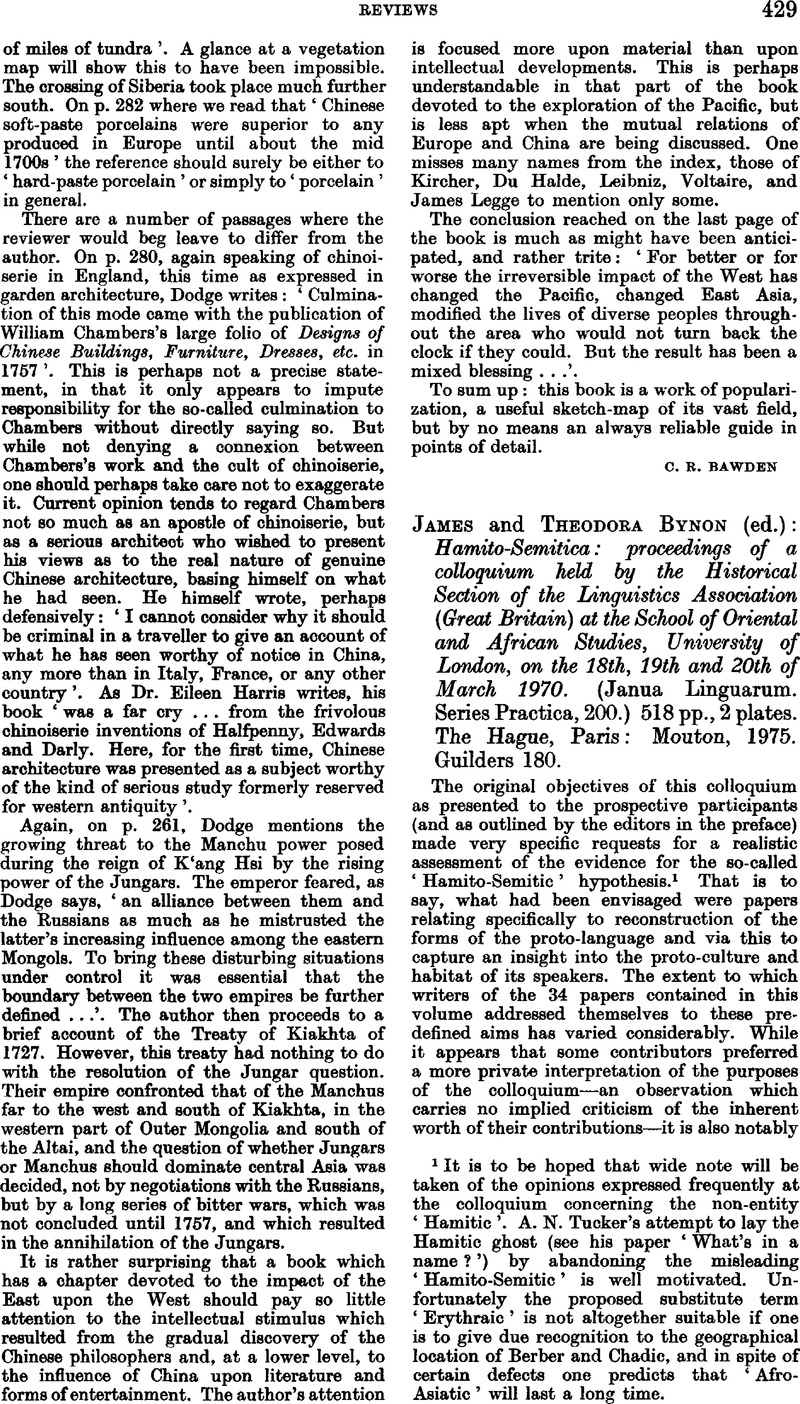No CrossRef data available.
Published online by Cambridge University Press: 24 December 2009

1 It is to be hoped that wide note will be taken of the opinions expressed frequently at the colloquium concerning the non-entity ‘Hamitic’. A. N. Tucker's attempt to lay the Hamitic ghost (see his paper ‘What's in a name?’) by abandoning the misleading ‘Hamito-Semitic’ is well motivated. Unfortunately the proposed substitute term ‘Erythraic’ is not altogether suitable if one is to give due recognition to the geographical location of Berber and Chadic, and in spite of certain defects one predicts that ‘Afro-Asiatic’ will last a long time.
2 D'yakonov, I. M., ‘Problems of root structure in proto-Semitic’, Archiv Orientální, XXXVIII, 4, 1970, 453–80.Google Scholar
3 Hetzron, Robert, Ethiopian Semitic: studies in classification, Manchester, 1972.Google Scholar
4 Newman, P. and Ma, Roxana, ‘Comparative Chadic: phonology and lexicon’, Journal of African Languages, v, 3, 1966, 218–51.Google Scholar
5 Parsons, F. W., ‘Is Hausa really a Chadic language? Some problems of comparative phonology’, African Language Studies, XI, 1970, 272–88.Google Scholar
6 Bender, M. L., ‘The languages of Ethiopia’, Anthropological Linguistics, XIII, 5, 1971, 165–288.Google Scholar
7 Sasse, Hans-Jürgen, ‘Bemerkungen zum “Language Survey of Ethiopia”’, Zeitschrift der Deutschen Morgenländischen Gesellschaft, CXXIII, 1, 1973, 117–28.Google Scholar